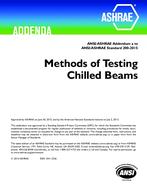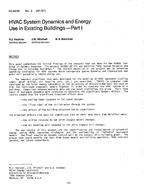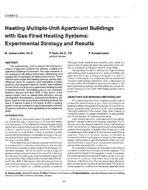The steady-state concentration of occupant generated carbon dioxide (CO2) is used in some applications as an indicator of compliance with a required ventilation rate. These applications assume that the CO2 is at a uniform concentration in the space being considered, and that the outdoor concentration, ventilation rate, and CO2 emission rate are all constant. Emission rates are often derived using an equation in the ASHRAE Fundamentals Handbook, which is poorly referenced and not based on the most recent understanding of the principles of human metabolism. A newer model was recently proposed that is based on these principles and considers the emission rate to be a function of age, sex, body mass and metabolic rate.
This paper presents an investigation into the uncertainty in CO2 emission rates of US children of 4 to 19 years of age using this new model. The analysis is informed using government-published weight-for-age percentiles and sex ratios, and representative values of child metabolic rates in schools. However, since the metabolic rates are unavailable in probabilistic form, a distribution about an assumed mean value is applied. A Monte Carlo approach is used to generate cumulative distribution functions of CO2 emission rates for infinite populations of children and for school classes of 20 students for a range of age groups. This approach shows that the individual emission rate increases with age and that there is significant variance about the mean value – the standard deviations are at least 20 % of the means. Mean emission rates for classes of 20 students also vary with age group, with a 95 % confidence interval of 4.1 to 4.3 cm3 s-1 per person for 20 school age children. The uncertainty in a class mean emission rate decreases as the class size increases.
A global sensitivity analysis is used to determine that the most important model input is body mass and that metabolic rate is statistically significant. This means that standards and guidelines can use existing body mass data used by health services to determine appropriate values of mean emission rate to represent a local population.
Citation: IAQ 2020: Indoor Environmental Quality
Product Details
- Published:
- 2020
- Number of Pages:
- 8
- File Size:
- 1 file
- Product Code(s):
- D-IAQ2020-C32
- Note:
- This product is unavailable in Belarus, Russia


